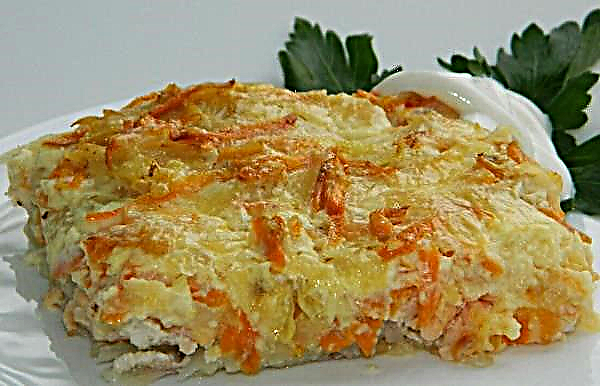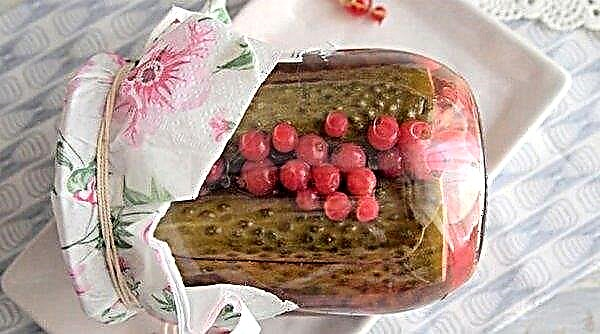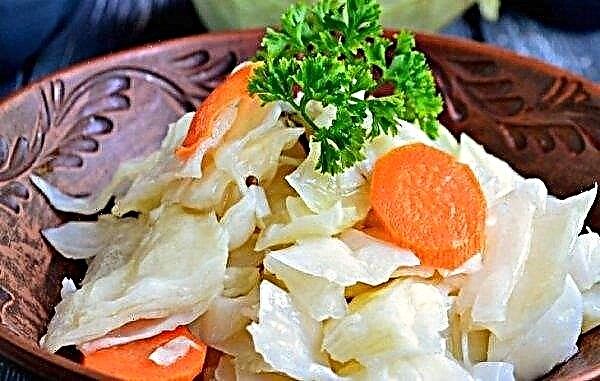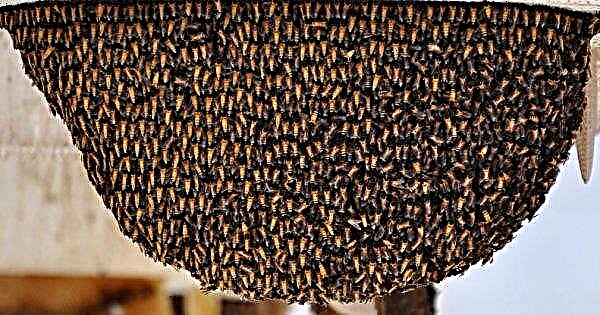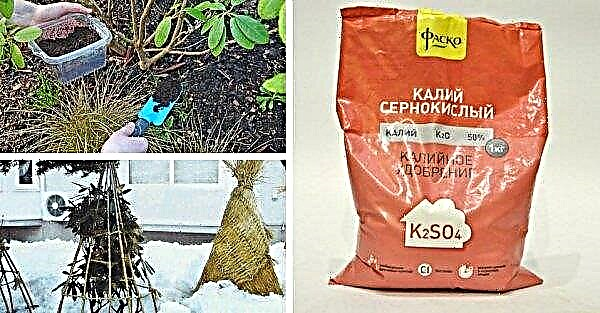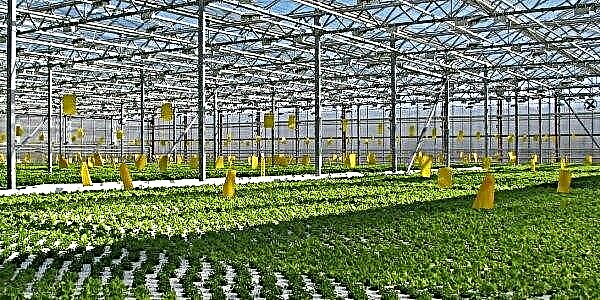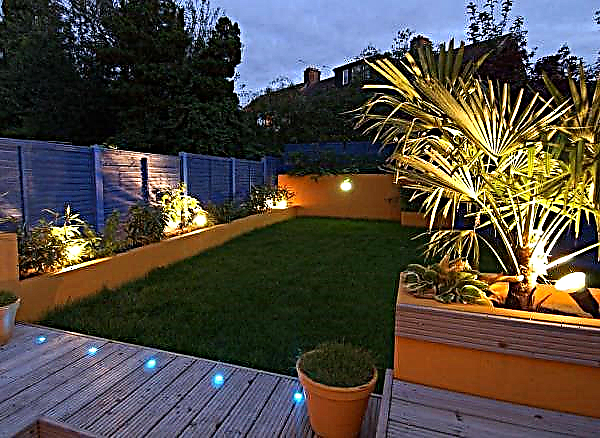In today's article, we propose to get acquainted with one of the grape varieties that have a large number of admirers - this is Bogatyanovsky, which will surprise not only with huge clusters, but also with great taste. Consider the description of this variety, its advantages and disadvantages, as well as the characteristics of planting and cultivation.
Selection history
“Bogatyanovsky” is obtained from crossing two varieties - this is “Talisman” and “Kishmish Luchisty”. Both varieties are characterized by excellent taste and are used fresh: they transferred these qualities to a new hybrid, endowing it with oval white berries.
This grape variety was developed by a Soviet amateur gardener living in the Kuban - an employee of the All-Russian Research Institute of Kraynov Viktor Nikolaevich. Despite the fact that in his entire life he bred more than 45 varieties, it was this one that was his pride. The name of the grapes was given in honor of the settlement of Bogatyanovka, which was located in the same place where this hybrid was first grown.
Did you know? Portugal and Spain have a festive tradition: on New Year's Eve, 12 grapes are eaten during the chimes, while making the same number of wishes.
Grade description
To decide on the purchase of a seedling of Bogatyanovsky grapes, it is recommended to get acquainted with the description of the appearance, as well as its advantages and disadvantages.
Appearance
The variety is vigorous, regardless of whether it grows on its own roots or is grafted onto another crop. The shoots are endowed with great growth power and are fairly easily rooted.
The hybrid has the following characteristics:
- Bush. Due to the fact that the variety has bisexual flowers, it has high yield indicators. The flowering period begins closer to mid-summer. The leaves grow medium in size and have a rounded shape, they are divided into 3-5 blades. They are painted in light green color, there are no tubercles on the surface.
- Bunch. Large, but medium density. Endowed with a conical shape. The average weight is about 1 kg. Proper care and top dressing can help gain a mass of 2 kg.
- Berry. Large in size and oval in shape. They are painted yellow-green with a brownish tan. The weight of the berry is from 9 to 12 g. There are individual specimens that can reach 25 g. The skin of the berry is thin, the pulp is fleshy with a lot of juice.
- Yield and ripening. Harvested after 130 days after budding. On each shoot, up to 3 full-fledged inflorescences are formed. In general, the variety is high-yielding, and this indicator is stable for a long time. To obtain large berries, it is recommended to trim the vines into 9 eyes. Harvest ripening occurs at the end of summer.
Grape application
"Bogatyanovsky" is used fresh and for wine production.
Advantages and disadvantages
Like any other variety, "Bogatyanovsky" has both pros and cons, then we will consider them.
- Advantages:
- large size and weight of berries;
- flowers are well pollinated;
- maximum ripening of shoots;
- good ratio of sugar to acid;
- high yield;
- good transportable properties;
- high rate of survival of cuttings.
- Disadvantages:
- slightly watery pulp;
- cannot stay for long on the bush, begins to dry;
- requires preventive treatment of diseases;
- mandatory use of backups.
Landing rules
Consider what the rules for planting the grape variety “Bogatyanovsky” will allow you to get the maximum possible yield.
How to choose quality seedlings when buying
Before deciding on the purchase of seedlings, it is recommended to consider what requirements are presented:
- Place of purchase. It is better to choose special nurseries in which healthy seedlings are grown and adapted to different conditions.
- Appearance of a seedling. The root system must be developed, the presence of at least 4 full-fledged roots (the length of each is more than 2 mm) is mandatory on it.
- Shoots must be ripened at the base. The length of the matured growth is not less than 25 cm.
- Leaves. When seedlings are acquired in autumn, leaves should be absent, as they absorb moisture, which negatively affects the condition of the plant.

Where to plant on the site
The choice of location depends on the climatic features of the region. In the northern regions, this should be a site with a lot of heat. At the same time, it is important that low trees or shrubs grow around — they will help protect the bush from drafts or cold.
Regions with a humid climate need a longer landing to provide good ventilation: it is better to choose a slope or a mound.
The region with a dry climate is the most difficult for the plants under consideration, since in the absence of the possibility of watering, you need to choose a place with a shallow groundwater table. If there is access to water, you can choose a sunny area, but for mulching use a plastic film.
In any case, it is important for the Bogatyanovsky variety to provide a lot of sun. To do this, it is planted in a direction from north to south: only in this case enough light will fall on the leaves. It is better to retreat from buildings and tall trees to a distance of about 3 m.
How to plant
The best time to plant is spring. This time will help the bush to take root before the frost and grow the vine. You need to plant the bushes at a distance of 2 m from each other - so they will not obscure each other and, as a result, ripen faster.
Important! It is strictly forbidden to compact the earth around the seedling, as this will violate the breathability. To make the roots level down, after sprinkling with earth, the bush is slightly pulled up.
Step-by-step instruction of the landing process:
- dig a hole measuring 80 × 60 cm;
- 20 cm of drainage are poured into the bottom;
- the pit is filled with a fertile mixture of earth, manure, peat and sand;
- the seedling is placed in a pit;
- it is bent towards the support;
- soil is poured on top;
- carry out watering with warm water.

Features of seasonal care
Seasonal care consists in systematic watering, pruning and fertilizing, as well as in creating support and carrying out garter bushes.
Watering
Humidification is carried out in spring if there was little rainfall in winter. At the same time, the water temperature is chosen depending on the purpose: cold will slow down the process of budding, and warm will speed it up.
When conducting surface irrigation at a distance of about 30 cm from the bush, a groove 25 cm deep is dug in a circle. Water is poured into it and covered with earth, which is then loosened.
In addition, stationary irrigation can be carried out. To do this, at a distance of 10 cm from the edge of the hole, dig a pipe with holes to a depth of about 1 m. A cut-off bottle of 5 l is installed on top, into which water is then poured directly to the roots of the bush.
Did you know? To produce a bottle of grape wine, an average of 600 grapes needs to be processed.
Watering is completed in mid-July in order to avoid further cracking of berries. However, if the summer is too dry, additional wetting will still be required. Do this at least 2 times a month, the ground should be saturated with moisture for 0.5 m.
Top dressing
On average, fertilizers are applied 3 times per season.
Consider when and what top dressing is used for this:
- Before flowering. They make mineral fertilizers with a low amount of nitrogen. The solution is prepared from 35 g of granules and 10 l of standing water. They bring it under the root, and then carry out additional watering.
- During the ripening of grapes. The composition is prepared from 15 g of superphosphate, 10 g of potassium salt, 1.5 g of boric acid and 5 l of water. Everything is mixed and the resulting solution is sprayed with foliage.
- After 2 weeks after the previous. Foliar top dressing is carried out with the following composition: 5 g of potassium salt, 5 g of soda, 2 drops of iodine and 5 l of water. Everything is mixed and sprayed with leaves and vine.
Prop and garter shoots
To avoid breaking off the growing shoots, it is recommended that they be attached to trellises or a support. Such manipulations are carried out only with plants that have several shoots. To collect them, you will need to have poles up to 3 cm high and 15 cm thick, as well as wire.
The supports are dug into the ground so that at least 2 m rise above the ground. The distance between the vertical supports should be at least 3 m. Holes are drilled at them at a distance of 40 cm, the lowest at the same distance from the ground. Most often do 3 rows.
Garter can be of two types:
- dry - carried out in the spring, after removal of the shelter;
- green - after the growth of young shoots.
The first is carried out before budding, do it carefully, despite the flexibility of the shoots. Garter is carried out to the wire from below, placing branches horizontally. Re-gartering is carried out when the shoots reach a length of more than 40 cm. This will help to avoid problems with the wind, as well as their interweaving, as well as facilitate pollinating. During the season, a similar procedure is repeated several times. For garter use soft material.
Re-gartering is carried out when the shoots reach a length of more than 40 cm. This will help to avoid problems with the wind, as well as their interweaving, as well as facilitate pollinating. During the season, a similar procedure is repeated several times. For garter use soft material.
Soil care
Like any plant, Bogatyanovsky grapes need the following care:
- Weed weeding, which is carried out as needed.
- Loosening the soil is carried out immediately after irrigation. This is done to minimize moisture evaporation and also to improve air circulation.
- Mulching is an additional care measure to preserve moisture in the ground. To do this, use foliage, hay or large pieces of bark.
Pinching and trimming
To obtain dense and juicy berries that are endowed with a high sugar content, it is recommended to form shoots and remove stepsons without fail.
In the first year of life, pruning is not carried out. In the following years, bush formation and vine growth adjustment are required. When spring arrives, overgrowth is removed after ovaries appear. Pruning is carried out in such a way that no more than 3 leaves are left on each stalk.
Important! During the formation of clusters, pinching the stepsons is carried out several times.
They also pinch the stepsons of the current year, which will reduce the load on the bush and lower the thickening.
Winter preparations
Such manipulations are carried out when the temperature at night drops to + 3 ° C: they consist in carefully laying the vine on the ground and sprinkling it with sand. A nonwoven fabric is laid on top. To make the structure strong, it is fixed on the sides with metal arcs.
Most often this is done in late November. If warming does occur, the protective material is partially opened to ventilate the vines.
As we see from the foregoing, care for grapes of the Bogatyanovsky variety is simple. The main thing is to adhere to the proposed rules, and then at the end of the season you will get the maximum harvest of great taste.

